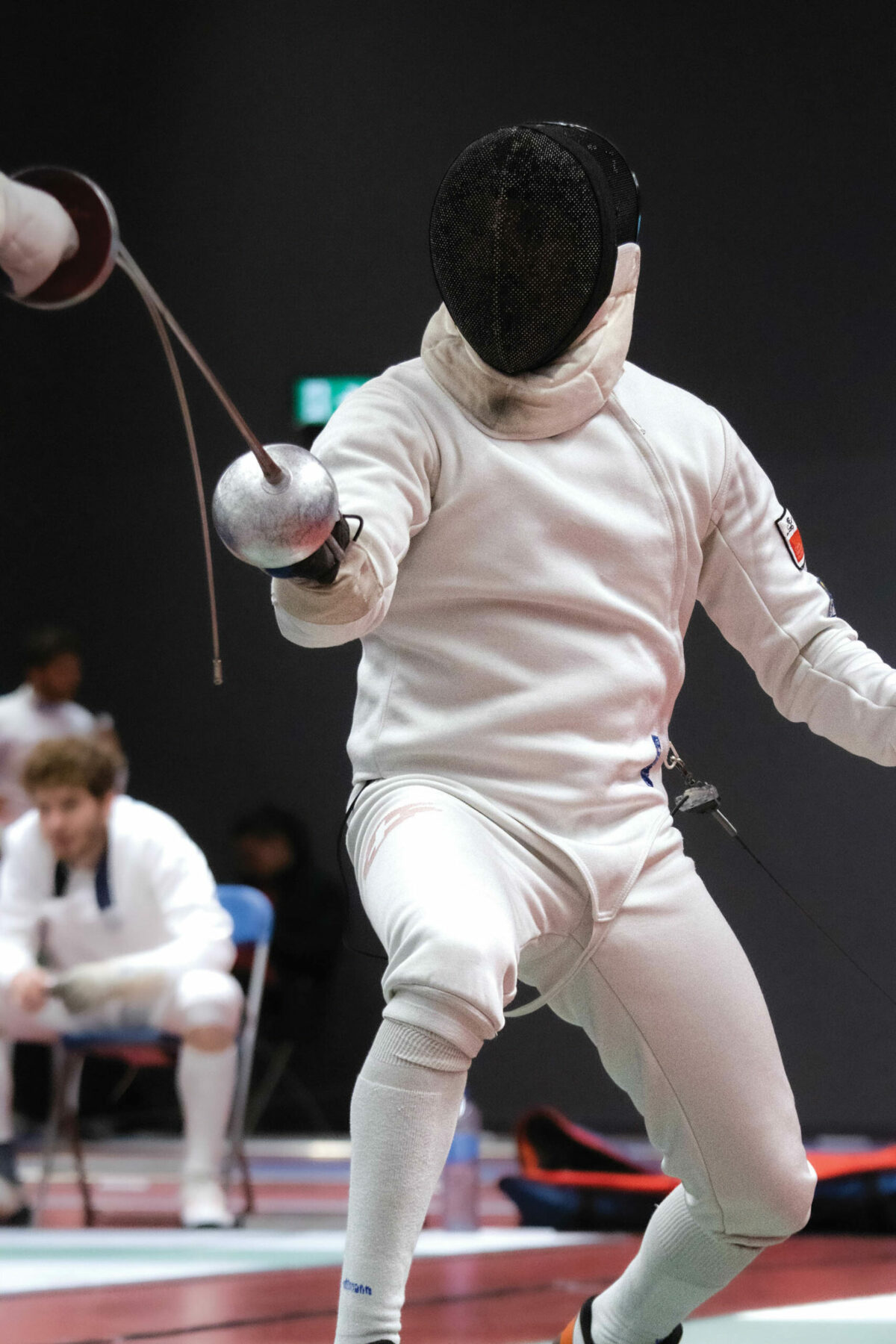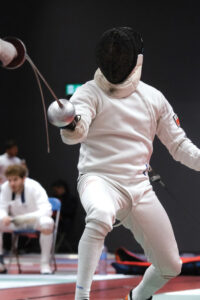Meet the Austin Fencers Club

In the gymnasium of the Red River Church, foils and epees are clashing with each other in a bout of fencing. They start off with a salute, blade raised in front of them before giving one salute to the referee and one to each other. Then, their blades swish to the side — the match has begun.
The Austin Fencers Club meets Monday through Thursday from 5 to 9 p.m. and centers around recreational fencing for anyone and everyone who may be interested in learning how to fence or even those who are looking for a club to continue their fencing.
In fencing, there are three types, each referring to a different weapon used: foil, epee and sabre. Foils and epees are primarily thrusting weapons, while the sabre is a cutting and thrusting weapon. The maximum weight allowed for the foil and sabre is 500 grams, while for the epee, it is 775 grams.
For both foil and epee matches, the only way to score is with the tip of the blade; however, with sabre, you may use the side of the blade in addition to the tip to score points. In foil matches, points are only scored when the torso is hit. In sabre, the torso, as well as the head, are valid targets for scoring points. However, in epee matches, the entire body is fair game for points.

While the Austin Fencers Club does not offer classes for all three types, they do offer classes on foil and epee.
Blake Ruffner, a coach at Austin Fencers Club, has been fencing for 11 years and has been a fencing coach for the last few months in Austin.
“I had a friend who did fencing and offered a demonstration,” Ruffner says. “I wanted to try something that wasn’t a team sport.”
Fencing is a very physical sport, involving lots of exercise and technique in order to become skilled. Ruffner likens fencing to chess.
“Some people call it a mental chess and yes, there are mental aspects, but it’s also super physical; you have to be athletic to be really good at it,” Ruffner says, “There are mental aspects, but it’s definitely really athletic.”
Each class starts with a warmup — sometimes it’s just a jog around the gym, sometimes it involves tossing a ball to each other, other times it’s a game of either the coach’s or students’ choice. Ruffner says some people also do stretches.
“If your body needs (stretching), you can do it on your own,” Ruffner says. “You should be sweaty and ready to start.”
Austin Fencers Club offers beginner lessons for $30 for 30 minutes. In a beginner lesson, a coach demonstrates how to hold the blade, how the gear should be worn, the blade work, different types of footwork and more.
“We recommend at least four or five intro lessons before joining the regular class,” Ruffner says. “It really depends on how fast everything clicks.”
A youth class occurs from 5 to 6 p.m. on Tuesdays and Thursdays while open classes are available to everyone from 6 to 8 p.m. on Mondays through Thursdays. Then, from 8 to 9 p.m., the area is open fencing. You have to be at least 7 years old to fence with the Austin Fencers Club.
There’s also no need to worry about renting or owning fencing equipment as Austin Fencers Club provides all the gear necessary. However, if you wish to look into competing, it would be better to own your own equipment.
In addition to the classes throughout the week, there is an invite-only competitive foil class on Saturday mornings. Competing in fencing in the United States is a little different than competitive fencing in other countries because fencing in the States is an entirely self-funded venture. Other countries will provide a stipend and fencing then becomes what they do for a living. In the U.S., competitions are also divided into age groups and regions.
“It’s mostly recreational, but we do have a solid group of competitive fencers,” Ruffner says. “We don’t force anyone to go to tournaments; if you want to, we will help you get there and we will help you do good.”
Fencing has been one of the five sports to be featured in the modern Olympics (the other sports include athletics, cycling, swimming and gymnastics). Sabre has been featured in every Summer Olympics since 1896, epee since 1900 and foil has been featured every year except in 1908.
Though fencing has a lot of critical thinking involved, Ruffner says it’s actually fairly physical and requires much more physical discipline than one would expect.
“(Fencing) is actually a lot more athletic than most people assume,” Ruffner says. “It’s called mental chess, but it’s more like a martial art or boxing. It’s combat but with swords instead of your fists.”






